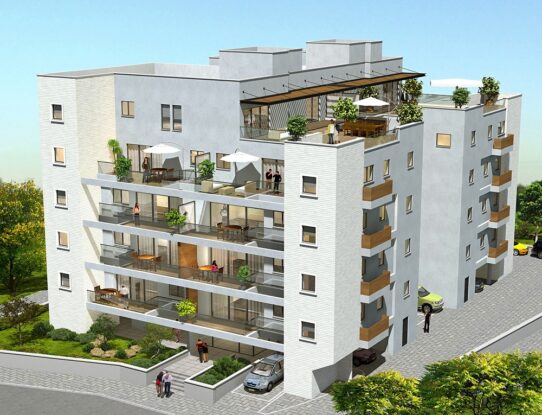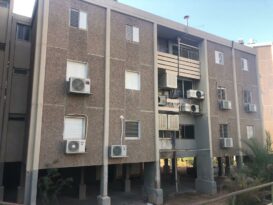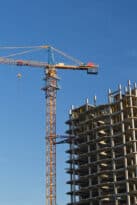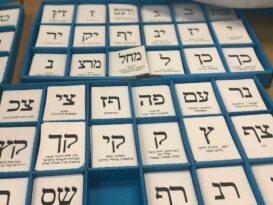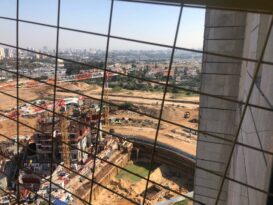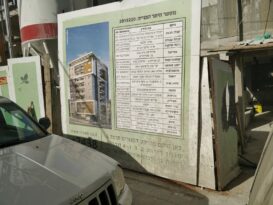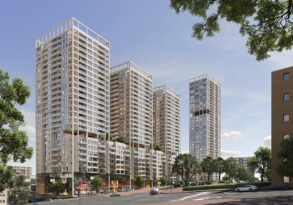Israel is located on a seismically-active fault line known as the Syrian African Rift and the possibility of earthquakes of high magnitudes pose a threat to millions of people and their property – in the region. To experts in the field, it is not a question of will there be an earthquake, but rather when will an earthquake occur?
What is Tama 38?
In preparation for such an occurrence, the government initiated the National Master Plan Number 38, better known as Tama 38 ((תמ”א = תוכנית המתאר הארצית. The purpose of the plan, which went into effect in March 2005, aims to strengthen the weak foundations of old buildings which would not be able to withstand the devastation of a strong earthquake.
Under Tama 38, a developer strengthens and upgrades an existing old building and receives, in return, additional building rights to be utilized in the building. The plan encourages new construction in old areas, but unlike the “pinui binui scheme”, it applies to individual buildings rather than to entire neighborhoods or complexes.
Which buildings are included in TAMA 38?
One might think that Tama 38 applies to regions that are more prone to earthquake damage. In reality, however, Tama 38 has no geographic distinction; permission to execute a project does not depend on city or area. Instead, Tama 38 applies to residential buildings which meet the following conditions:
- The building permits were issued prior to January 1, 1980 (with some exceptions).
- The structure does not meet the Israeli Standard 413 for Earthquake Resistance (as per a certified engineer).
- The building has not been designated for demolition according to a plan or final order of a court.
- The building has at least 2 floors and its total area exceeds 400 square meters.
At the time when Tama 38 was enacted, approximately 1.1 million apartments in Israel met the conditions above; however, Tama 38 has predominantly been executed in areas such as Tel Aviv, Givatayim, Ramat Gan, and Ra’anana where real estate values are higher allowing greater profit for the developers.
Tama 38—a win-win situation
Tama 38 is an ingenious plan where everyone wins. The contractor receives rights to build and sell additional apartments, the tenants get an upgraded property and protection against earthquakes, and the State does not have to pay for protection against earthquakes for its citizens. The Tama 38 project can be initiated by the homeowners in the building or by a developer who approaches them.
In the past two years, there has been a significant rise in interest in Tama 38 as a result of the huge success of completed projects. Despite this, the number of projects launched is still relatively small due to disagreements and mistrust between residents and not as a result of bureaucracy on the part of the local authorities.
The Tama 38 scheme requires 66% of residents to agree to the plan. In most cases, they hire legal advisors and engineers to guide them throughout the process and assist them in dealing with the developer, the local authorities and the various other parties involved in the project.
In February 2010, a new plan known as Tama 38/2 was introduced allowing an existing building, which fulfilled the criteria for Tama 38, to be demolished and replaced by a completely new building. (This is similar to the pinui-binui program whose purpose is primarily urban renewal and not strengthening of the structure). According to the amendment, construction of the new building must meet stringent engineering standards to prevent damage during earthquakes. Tama 38/2 requires 80% of apartments to sign up and agree to the project.
What do the homeowners receive in Tama 38 projects?
Each resident in the building may receive – in addition to the strengthening of the building’s foundations:
- up to 25 additional square meters by means of an extra room, balcony and/or storage room
- modern elevator (installed inside the building where possible)
- parking spaces (where permissible)
- exterior remodeling
- garden landscaping
- renovation and upgrading of the lobby and the stairway
- intercom system
- upgrading of the building infrastructure including water pipes, sewers, and gas lines
- covered garbage areas
- bike and stroller shelters
In short, residents receive significant improvements to their existing apartment – a financial appreciation of around 20-30% of its previous value.
What does the developer stand to gain?
The developer receives the rights to build additional units in the building which he may sell freely on the open market. The exact amount of rights that he receives depends on the specific taba (City Plan) for that area. For example, in the center of Israel, the maximum additional area the developer can build is usually 1.5 floors, whereas in the peripheries, it is generally 2.5 floors. Since the developer builds these additional units on the upper floors which are usually the penthouse or roof apartments, these apartments are the most valuable.
Project execution time
Once the required number of residents have signed up to the project, it usually takes approximately 6 months to receive the building permits and an additional 18-24 months for the actual construction to take place.
What happens to the residents during the lifespan of the project?
In Tama 38 projects, residents remain in their apartments during the construction phase. They have to deal with noise, dust and great inconvenience whilst living on a construction site. With Tama 38/2, the existing building is demolished and tenants receive a comparable rental apartment at the expense of the developer until the new apartment is completed and ready for move-in.
Taxation
In order to encourage Tama 38, projects are subject to significant tax benefits including:
- mas shevach (Capital Gains Tax) and VAT – exemption on the sale of rights to the developer
- hetel hashbacha (Betterment or Improvement Levy) paid to the local authority for the building rights – full exemption, or 90% discount rate
- VAT for construction and demolition services that the builder provides – exemption..
Additional taxes to be considered include:
- Mas rechisha (purchase tax) on the building rights granted to the developer – approximately 5% of the value of the rights
- Mas shevach on the new apartments – must be paid by the developer
- Arnona (municipal taxes) on the “new” apartment – one can expect these to increase as a result of the enlargement and improvement of the property.
Investing in Tama 38 projects
Most developers of Tama 38 projects are Israeli construction companies or firms that were established to carry out Tama 38 projects. Each Tama 38 project requires an investment of tens of millions of shekels. Banks generally prefer to loan money for more conservative projects and are less inclined to fund Tama 38 construction. In light of the economic viability of such projects, many investors have partnered with developers, mainly in the central region, to provide financing and earn themselves lucrative yields.
Another way to jump on the Tama 38 band-wagon is to buy apartments in old buildings that meet the criteria of Tama 38 with the expectation that the building will undergo the strengthening and upgrading process. Once more apartments in the building are owned by investors, it is easier to influence the other residents and gain the required number of people to agree to the plan.
Finally, investing in new apartments in Tama 38 projects are also worth considering. As with all new construction, the buyer comes in at “ground level” and should enjoy watching his property appreciate steadily in the years to come.
The risks inherent in Tama 38
To the residents, the greatest risk is that the developer will go bankrupt or disappear during the project. However, as with any real estate investment, legal agreements and mechanisms should be set in place to protect all parties from such occurrence.
Changes could occur before the project is completed that could potentially reduce the financial viability of the project for the developer or financier. For example, market prices in the area could fall; final permit rights could be reduced, unforeseen expenses and delays due to the complexity of the work may arise, or the local authority could find a way to charge the betterment levy.
Tama 38 is an attractive and exciting way to invest in the urban renewal trend in Israel. There are a number of funds and investment companies offering attractive opportunities to investors and entrepreneurs. But remember, this program requires expertise in construction in old structures, marketing the program to existing tenants, and dealing with complex regulation and taxation. It is important to check the credentials and track record of the team before investing your funds.
